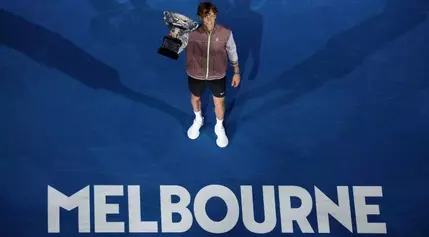In the world of tennis, the new season is already in full swing, with players facing a whirlwind of challenges and changes. The Brisbane International and United Cup have seen some familiar faces return, but also highlighted ongoing issues within the sport. Following Rafael Nadal's retirement and Jannik Sinner's Davis Cup victory, the tennis community braces for another intense year leading up to the Australian Open on January 12. Nick Kyrgios' injury woes continue to cast doubt over his participation, while Novak Djokovic raises concerns about doping transparency. Meanwhile, the ATP and WTA schedules are under scrutiny for their grueling demands on players.
Nick Kyrgios: A Familiar Tale of Return and Setback
In the golden hues of summer, the tennis world has once again witnessed the unpredictable journey of Nick Kyrgios. After announcing his comeback following an extended injury layoff, the 29-year-old faced an immediate setback when he lost his first match in Brisbane after an 18-month hiatus. The defeat against Giovanni Mpetshi Perricard underscores the fragility of his wrist and raises questions about his readiness for the demanding five-set matches at Melbourne. This scenario echoes Kyrgios' previous experiences, notably at Wimbledon 2021, where he had to withdraw from his third-round match due to severe pain. The Australian player's resilience and determination are evident, yet his path to success remains uncertain.
Doping Controversies Resurface
As Novak Djokovic prepares for his 11th Australian Open title bid, he brings along a fresh coach—Andy Murray—in what seems like a nostalgic reunion of former rivals. However, Djokovic's mind is preoccupied with broader concerns. He has reignited discussions about doping in tennis, pointing out the inconsistency in how cases are handled. "We've seen players suspended without even testing positive," Djokovic remarked during a press conference. This issue highlights the need for greater transparency and fairness in the sport's anti-doping measures, as players and fans alike demand accountability.
The Burden of Overloaded Schedules
The ever-expanding tennis calendar is taking its toll on players. The ATP and WTA tours have been criticized for their relentless scheduling, which often leads to injuries and withdrawals. Top players like Carlos Alcaraz have openly expressed frustration, stating that the current schedule feels like a "death sentence." Former World No. 1 Iga Swiatek echoed similar sentiments, warning of dire consequences if changes are not made. The addition of longer tournaments, such as the 12-day Masters 1000 events, further exacerbates the problem. As the physical and mental strain mounts, the quality of Grand Slam performances may suffer, leaving fans and players alike questioning the sustainability of the current system.
New Era, New Rivalries
While the spirit of the Big Four era lingers through reunions like Djokovic and Murray's, the future of tennis lies in emerging rivalries. The clash between Felix Auger-Aliassime and Jannik Sinner promises excitement, while Jack Draper's rise adds a marketing allure. On the women's side, Coco Gauff's impressive showing at the WTA Finals signals her potential to challenge established champions like Iga Swiatek and Aryna Sabalenka. The sport's ability to produce compelling narratives, such as Barbora Krejčíková's emotional Wimbledon win, will be crucial in maintaining fan interest. As the tennis landscape evolves, it must balance tradition with innovation to thrive.
From a journalist's perspective, these developments underscore the dynamic nature of tennis. The sport's ability to adapt to changing times, address critical issues, and foster new stars will determine its future success. Fans can only hope that the challenges faced today will lead to a more sustainable and exciting tomorrow for tennis.

